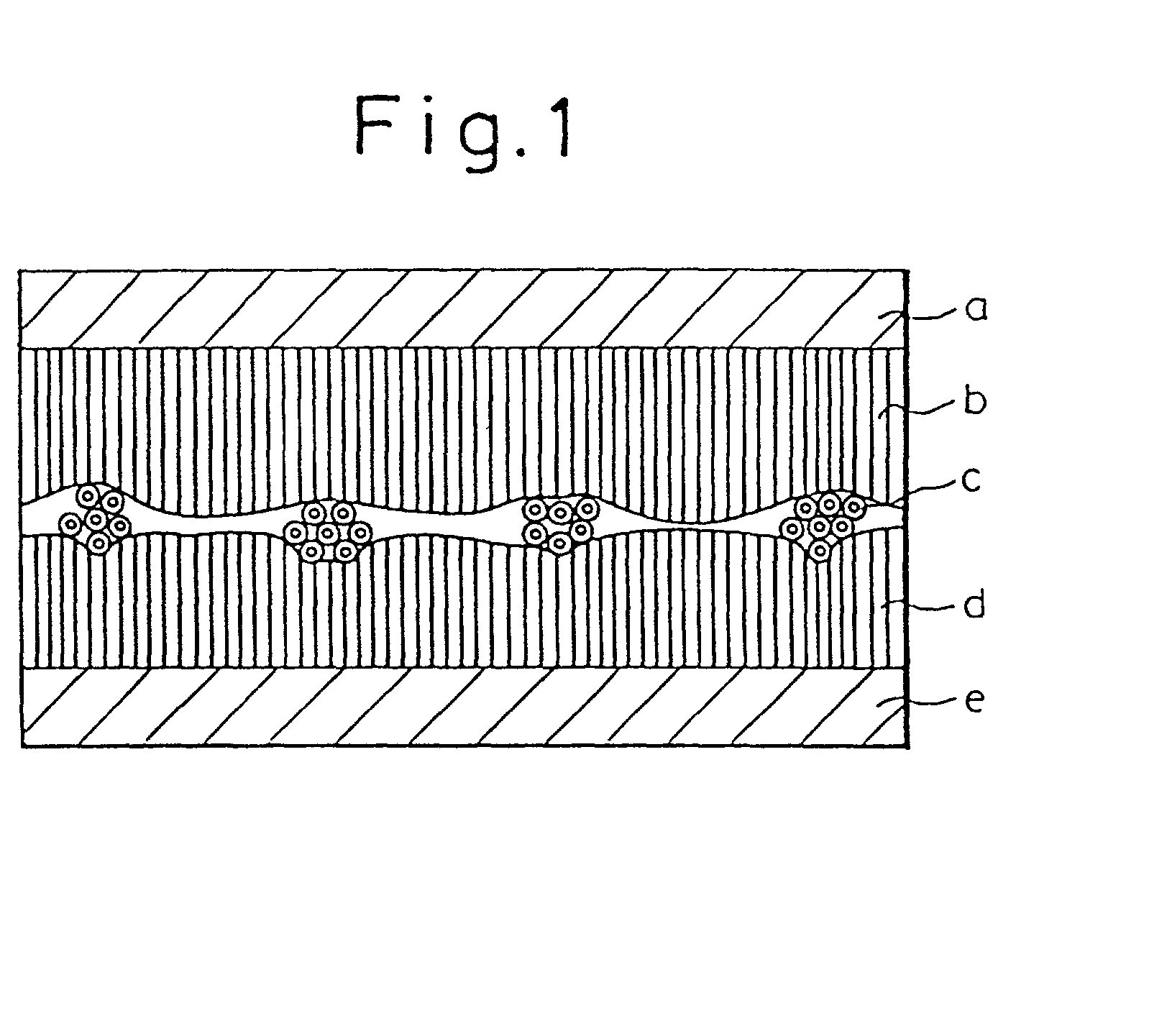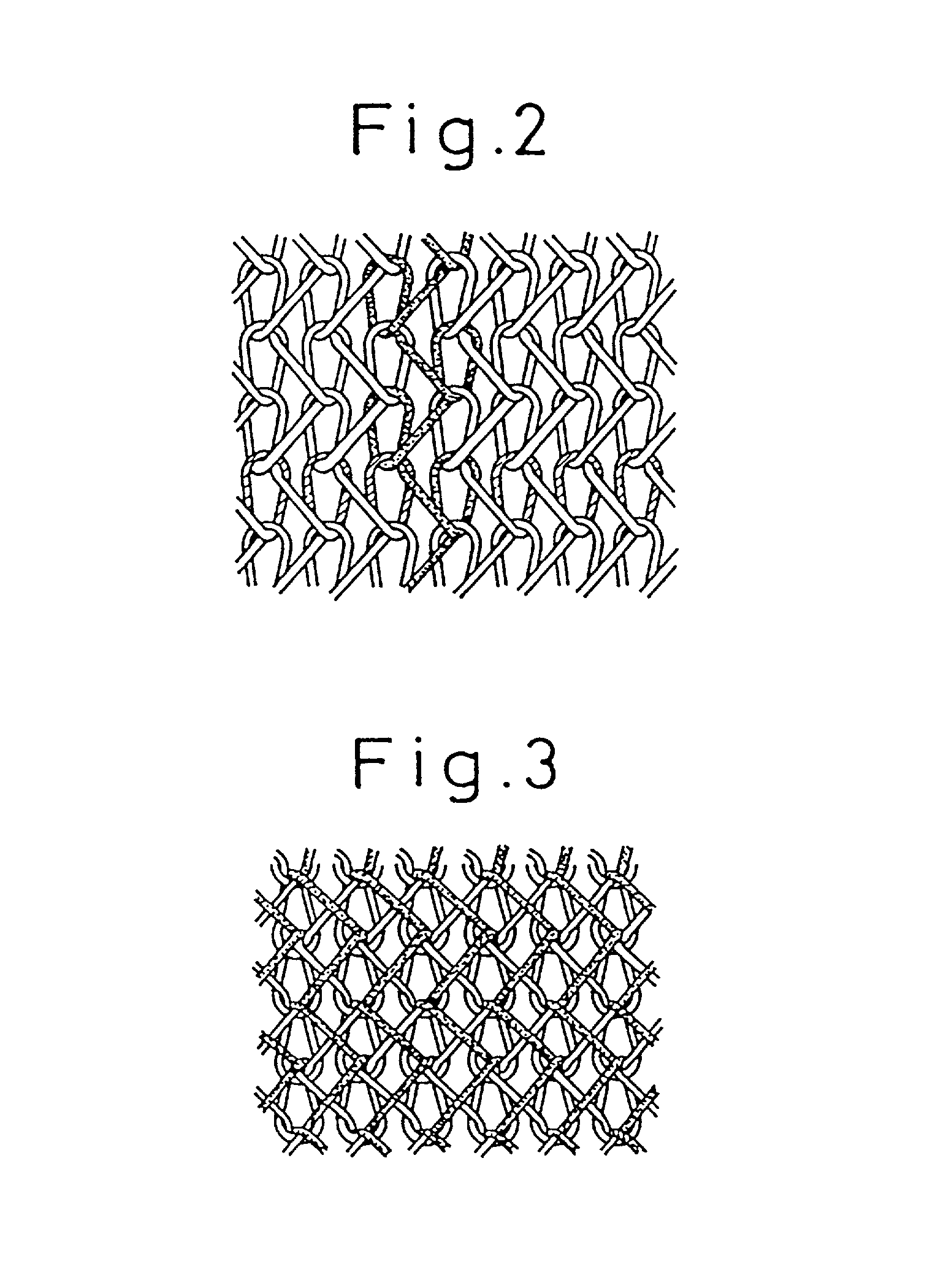Plaster agent and method of preparing same
a technology which is applied in the field of plaster agent and method of preparation, can solve the problems of skin rash generation, problems with the plaster agent of the prior art, and the adhesion of ointment to the patient's clothing, and achieves excellent slow releasability, easy handling, and high safety factor.
- Summary
- Abstract
- Description
- Claims
- Application Information
AI Technical Summary
Benefits of technology
Problems solved by technology
Method used
Image
Examples
example 1-1
[0184] After 13 parts of isosorbide nitrate (ISDN) were added to 500 parts of a tackifier solution (1) with a solid concentration of 20%, the solution was coated on a silicon-coated release paper to a thickness after drying of 20 .mu.m, and dried at 70.degree. C. for 2 minutes, and at 110.degree. C. for 3 minutes. The residual amount of ethyl acetate in the tackifier layer obtained was 49 ppm, and the ISDN content 2.4 g / m.sup.2 The tacky layer containing the ISDN was divided into three, to obtain 3 tackifier layers with the same composition (called tackifier layer d.sub.1, tackifier layer d.sub.2, and tackifier layer b).
[0185] Next, a film comprising a polyethylene terephthalate and having a thickness of 3.5 .mu.m (see "a" of FIG. 1) was pressure adhered on one surface of the tackifier layer b, and the hollow fiber sample (1) (see "c" of FIG. 1) was pressure adhered on the free surface of said tackifier layer b. The tackifier layer d.sub.1 was then pressure adhered on the free surfa...
examples 1-2-1-3
and Comparative Examples 1-3-1-5
[0195] Using the 71 denier / 24 filaments shown in the preparation of the hollow fiber sample (1), knitted fabrics and woven fabrics with different weights per unit area were prepared, and after scouring and drying according to conventional processes, treated with an aqueous 1% caustic soda solution and at boiling point for 2 hours, to obtain knitted fabrics and woven fabrics thinned 15% of its weight by an alkali treatment. Using these knitted and woven fabrics, the rat plastering tests were conducted in the same manner as in Example 1-1, to obtain the results shown in Table 1-2.
[0196] From Table 1-2, it is apparent that the plaster agents of the present invention exhibit an excellent slow release property. In contrast, Comparative Example 1-3 could obtain a desired level in the blood, and in Comparative Examples 1-4 and 1-5, erythema was observed on the skin of the rat.
2TABLE 1-2 Estradiol level in rat blood (average value of n = 3) (Unit: ng / ml) Weig...
example 1-4
[0201] An ethyl acetate solution containing the tackifier prepared in the "(3) tackifier solution" as described above was coated on a silicon-coated release film (film substrate was a polyethylene terephthalate with a thickness of 75 .mu.m) to a thickness after drying of 20 .mu.m, and 40 .mu.m, dried at 90.degree. C. for 1 minutes and at 130.degree. C. for 3 minutes, to obtain two kinds of tackifier layers, (1) with a thickness of 20 .mu.m and (2) with a thickness of 40 .mu.m. The residual solvent in the tackifier layers was found to be 20 ppm or less.
[0202] On one surface of a film of a polyethylene terephthalate with a thickness of 3.5 .mu.m, a width of 1000 mm, and a length of 100 m was adhered the tackifier layer (1) with a width of 980 mm, residual ethyl acetate of 22 ppm, a thickness of 20 .mu.m, and a length of 100 m, and then on the tackifier layer (1) was pressure adhered the hollow fiber sample (1) with a width of 1000 mm and a length of 100 m. The surface of the hollow fi...
PUM
| Property | Measurement | Unit |
|---|---|---|
| thickness | aaaaa | aaaaa |
| thickness | aaaaa | aaaaa |
| width | aaaaa | aaaaa |
Abstract
Description
Claims
Application Information
 Login to View More
Login to View More - R&D
- Intellectual Property
- Life Sciences
- Materials
- Tech Scout
- Unparalleled Data Quality
- Higher Quality Content
- 60% Fewer Hallucinations
Browse by: Latest US Patents, China's latest patents, Technical Efficacy Thesaurus, Application Domain, Technology Topic, Popular Technical Reports.
© 2025 PatSnap. All rights reserved.Legal|Privacy policy|Modern Slavery Act Transparency Statement|Sitemap|About US| Contact US: help@patsnap.com



